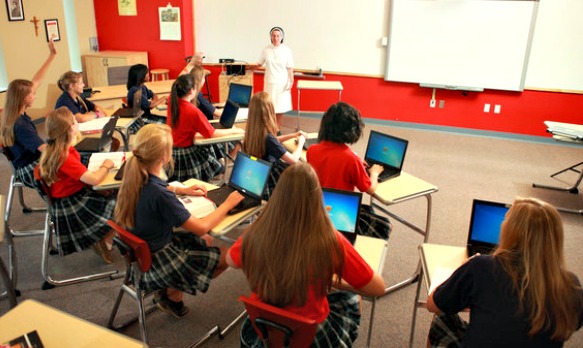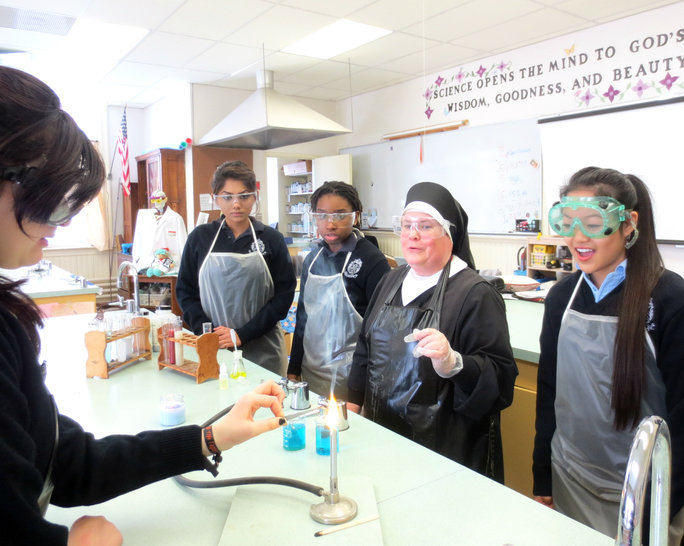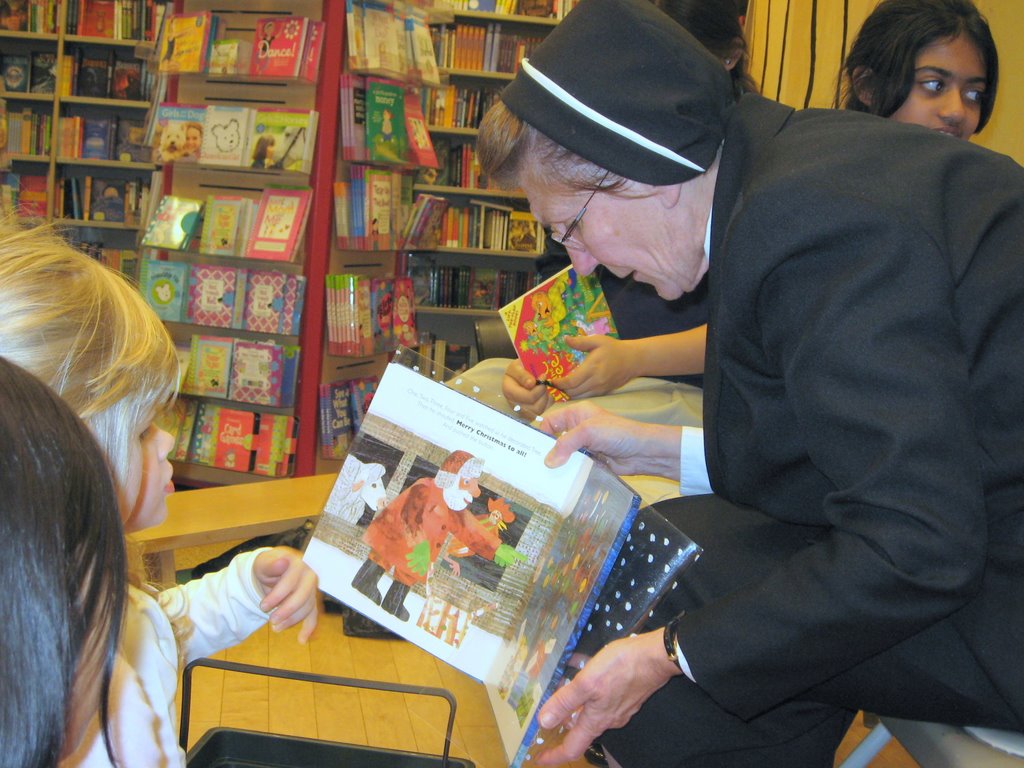Religious Sisters’ Continuing Impact on Catholic Education
How and why three communities love to teach today’s students.

Religious sisters have bestowed an incredible legacy on countless children who have attended Catholic schools in the United States.
St. Elizabeth Ann Seton, the first American-born saint and foundress of the first American religious community for women, established the first U.S. parish school, paving the way for Catholic education in America.
Congregations often remain unsung as they go about their mission. For Catholic Schools Week, the Register highlights three communities that work hard to teach the faith and academics to today’s students.
Instilling Catholic Values

The Apostles of the Sacred Heart of Jesus (ASCJUS.org) teach students from pre-K through high school and college through provinces on five continents. In the United States, there are approximately 125 professed sisters working in education, their primary apostolate, or in pastoral ministry in Connecticut, Florida, New York, Pennsylvania and Missouri.
“Teaching is a very important mission and apostolate for us, especially in the United States,” said Sister Veronica Beato, principal of Our Lady of Pompeii School in Manhattan, N.Y. The sisters have taught at this parish since 1930.
Sister Veronica herself started teaching in 1978 in the Bronx.
Before her current school, she was principal at St. Raphael School in Bridgeport, Conn., where the Apostles of the Sacred Heart of Jesus arrived in 1937 to help the large Italian population. When St. Raphael’s opened a school in 1960, the sisters began serving as administrators and teachers. Now, that school is combined with another inner-city school, which the sisters serve. The order is greatly involved in diocesan education: Sister Mary Grace Walsh of the Apostles of the Sacred Heart of Jesus is the superintendent of schools for the Diocese of Bridgeport.
The longtime service is not unusual, nor is working in the inner city, for this congregation. In 1913, the first parochial school they staffed in this country was Our Lady Help of Christians in one of St. Louis’ poorest neighborhoods.
“We do have outreach to the poor in terms of enabling families to be part of our schools,” explained Sister Veronica.
The order runs Catholic college-preparatory schools for young women — Cor Jesu Academy in St. Louis and Sacred Heart Academy in Hamden, Conn., where the provincialate is located.
Other high schools are coed, and all are owned and operated by the congregation. So is Clelian Heights in Greensburg, Pa., named after the Apostles’ foundress, Mother Clelian Merloni, which is a center dedicated to supporting children and adults with developmental disabilities, including those with autism.
Speaking of the Apostles’ dedication to teaching, Sister Veronica said, “We believe we can help students to appreciate Catholic values and to helpfully internalize those values, so they become responsible adults and hopefully become leaders in their communities as great Catholics. In leadership positions, they, in turn, help others. That element of service is very much emphasized in the high schools we have.”
Indeed, the sisters place great emphasis on their foundress’ vision, Sister Veronica said. “Her mission was to spread the devotion to the Sacred Heart of Jesus to everybody, and her outreach was to everyone in need.”
Sister Veronica related how, this past fall, one of the Brazilian sisters visited her school to speak to the children about an elementary school the congregation opened in Haiti after the devastating earthquake five years ago.
The children saw a video of the poverty there, and the visiting sister spoke of building a second floor on their school so more children could be helped.
“It opened the eyes of many of our children here to see all this, to see how blessed they are and that they can make a difference in the lives of others,” said Sister Veronica.
“When they heard the cost of tuition for one child in our school in Haiti is $25 for the year, the children said, ‘Wow! We can make a difference.’ Our schools responded very generously, in some cases with physical assistance like providing sneakers; in others, monetarily.” They also send paper and other supplies.
On every level, the Apostles of the Sacred Heart of Jesus are making a difference in education.
Teaching ‘Feminine Genius’

So are the Sisters of Charity of Our Lady, Mother of the Church (SistersofCharity.com).
“Education is central to our charism,” said Mother Marie Julie Saegaert, the order’s superior general and the secretary of the Council of Major Superiors of Women Religious.
She detailed the story of the vision of the order's priest-founder, Msgr. John Zwijsen, in Holland in 1832, saying that he recognized the important role of mothers. Mothers are the ones who teach children to pray and instill values in them, and show them what love is.
“It’s very important she’s forming the consciences of her children, who will then grow up, and it’s extremely important they think and write critically,” said Mother Marie Julie. “So he wanted to open a school to educate girls.”
Soon, these schools spread throughout Holland and Belgium. Then, in 1873, a Dutch missionary priest in Baltic, Conn., asked the Sisters of Charity to come to America to educate the girls of his parish.
“There were 300 volunteers willing to come here,” said Mother Marie Julie. Six from that group were chosen to “teach young women and children here, so they could grow up to be powerful forces in the family and witnesses in society.”
Arriving in Baltic, in 1884, they quickly established the Academy of the Holy Family as a girl’s high school for day and residential students; they also opened St. Joseph School, a grammar school.
“By the grace of God, we’re still operating,” said Mother Marie Julie, speaking from the order’s motherhouse in Baltic.
Other schools the sisters opened, like Sacred Heart School in Taftsville, Conn., in 1888, remain thriving.
In addition, some sisters teach in St. Paul, Minn., at St. Agnes, an award-winning K-12 school.
While the teaching mission and apostolate remained constant, over the years, the congregation added the apostolates of caring for the sick, the aged (including homes in Wisconsin) and the poor.
In 1970, the American province separated from the European motherhouse, and, with Blessed Pope Paul VI’s permission, Mother Marie Alma Lafond founded the Sisters of Charity of Our Lady, Mother of the Church as a new autonomous congregation in the United States.
Mother Marie Julie pointed out how a recent saint influences their work.
“We really stress the ‘feminine genius’ with our academy girls,” Mother Marie Julie explained. “John Paul II stressed that and spoke about how important the woman is in Church and society. Women bring gifts that men don’t — gifts that God has given women because of the role they play in the family and society. [They are] teaching in higher education, running businesses. John Paul II believed we need to reach deep within ourselves to find and use the gifts God has given us to make a difference in the Church and the world.”
“We believe that it’s so important to inculcate Catholic values in the children because the world is searching for truth,” added Mother Marie Julie. “We hope to make citizens of our young people, who can go out and do everything, from raising healthy, holy families to holding political office. If they’re formed with good Catholic values, they’re going to make a difference in the world.”
Indeed, while the religion of non-Catholics who attend the schools is respected, many non-Catholic youngsters, with their families, come into the Church. “Many have joined the Church in our schools, and some return to the Church,” the superior general said.
The non-Catholics initially come looking for the values that are taught in the schools, explained Mother Marie Julie. “Anybody can teach. But we need to have at the core a set of values, the Gospel values: self-discipline, self-respect, respect for others, stewardship and personal holiness. All that goes toward making saints. And we’re working hard at it.”
‘Go Teach the Word of God’

They are joined in their educational mission by another order, the Religious Teachers Filippini (FilippiniUSA.org), who have educated tens of thousands of students in the Catholic faith — more likely millions, since the congregation began in Italy in the late 17th century.
The congregation was founded by Cardinal Mark Barbarigo and St. Lucy Filippini, who later became the namesake of the congregation. The vision was to teach Christian doctrine, promote women’s dignity, influence a healthy family life and teach the poor to read and write. Today, the sisters do so in many countries.
Pope St. Pius X commissioned the first five Religious Teachers Filippini to go to the United States, where they arrived in 1910 in Trenton, N.J., to serve poor Italian immigrants.
In 50 years, through the efforts of Sister Ninetta, this first small group multiplied the American province to 500 sisters, and the children of the Italian immigrants they educated numbered more than 50,000. No wonder Sister Ninetta later became the congregation’s superior general and is considered one of the American congregation’s co-founders.
“Sister was the ‘energy’ of the group,” recalled Sister Ascenza Tizzano, today’s provincial superior of the Religious Teachers Filippini, speaking from Villa Walsh, the motherhouse in Morristown, N.J.
Bishop Thomas Walsh became a great friend and supporter of the sister when he became bishop of Trenton. Later named archbishop of Newark, he insisted on having the congregation teaching there. Hence, the congregation also views him as a co-founder.
Today, the Filippini sisters have several schools in New Jersey, plus others in Pennsylvania, Florida, New Mexico, and Brooklyn.
“I don’t think there is anything better than a Catholic education,” Sister Ascenza said. “It really is in our Catholic schools that we got many of our vocations to the priesthood and consecrated life.”
She continued, “Every religious community has charisms and gifts they give the students.” She detailed how the Filippini Sisters have always reached out and spread the love of the Sacred Heart of Jesus wherever they go. They also reach out to the poor and the young to help them, teach them and be examples of the love of Christ.
She enjoys when people recognize her as a Filippini sister due to her habit and tell her that, in school, they learned of St. Lucy Filippini and now have a lifelong devotion to her.
In 2010, the community celebrated its 100th anniversary in America at the Cathedral-Basilica of the Sacred Heart in Newark.
“For me, it was a sign of all the people we have touched through the years and a representation of what we meant to the people of God throughout the years,” Sister Ascenza said.
Today, there are 100 Filippini sisters in education, mostly in administration, although others teach. And some run religious-education programs.
Not all students are Catholic, but they attend these schools because “they know we are strong in academics, the discipline is good, and they’re safe,” Sister Ascenza shared.
The Filippini Sisters have remained faithful to their community’s motto: “Go Teach the Word of God.”
Sister Ascenza reflected, “Our sisters are still working hard — 45 still in the infirmary continue the apostolate to pray for our work in education. They were all teachers at one time and all passionate about the mission.”
The other congregations would agree.
Joseph Pronechen is the Register’s staff writer.
- Keywords:
- catholic education
- catholic schools
- catholic schools week
- religious orders and congregations
- women religious

















